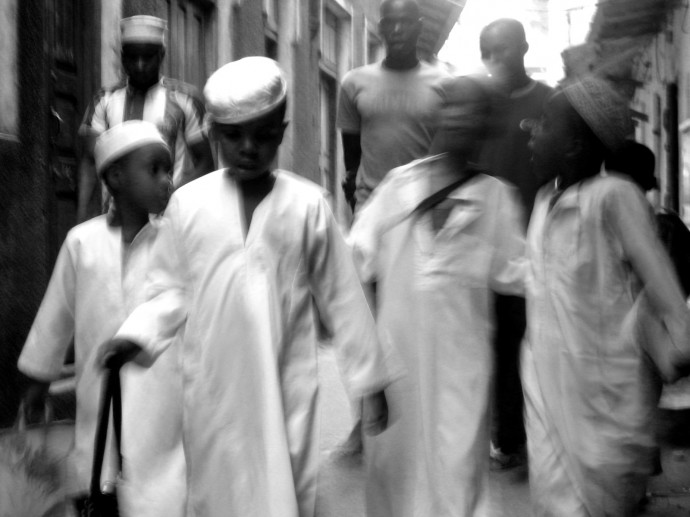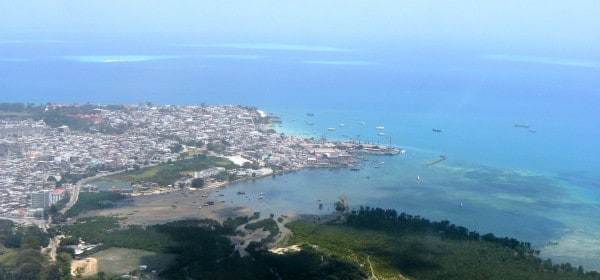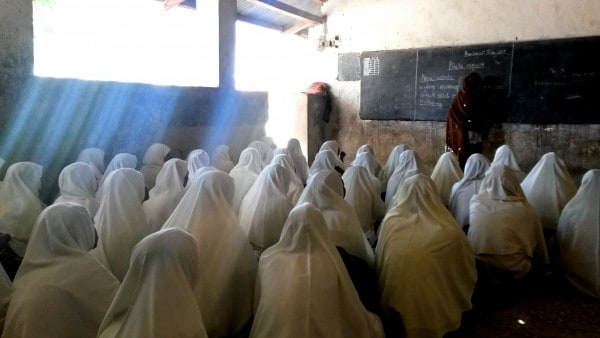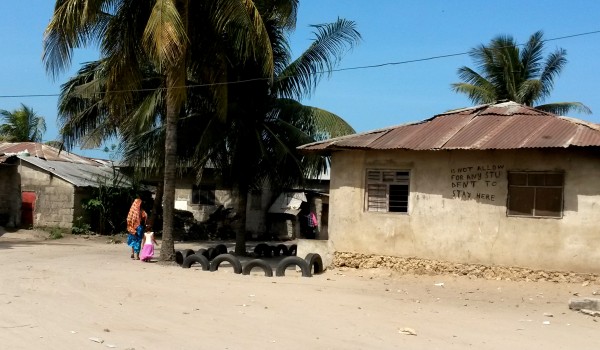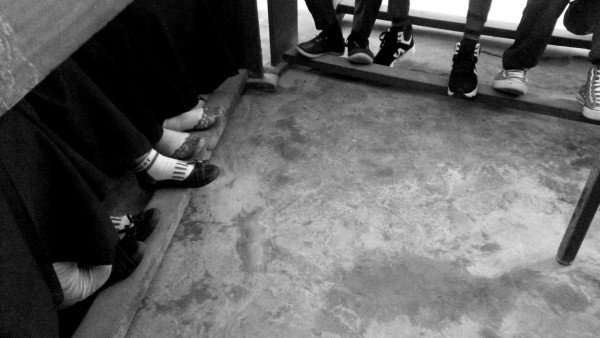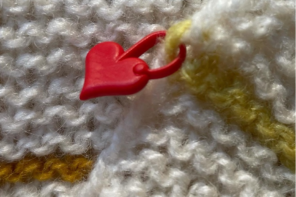Samira and Amna visit me in the afternoon after finishing Quran school (madrasa). After they have taken off their buibuis (long black overdress) and head scarves Samira continues taking off a few more layers of clothes. I ask her why she is wearing so much on such a hot day. The 2 Tshirts and 4 leggings are just enough, she tells me, otherwise it hurts too much when they hit us in madrasa. (Zanzibar, February 2015)
After 17 months of fieldwork in Zanzibar I suddenly only have a month left. A slight feeling of anxiety now accompanies my daily routine. What did I find? How do I make sense of it? Whom else do I need to interview? When do I say goodbye to my research participants? Zanzibar has been a journey. But this is rather in the sense of the Noun – “an act of travelling from one place to another” – than the verb – “to travel somewhere”.
Where exactly this journey has taken me I cannot yet say, but it certainly picked me up somewhere and took me to other places – emotionally, intellectually, physically – over and over again.

In moments like the one described above the reality of many children’s lives in Zanzibar unfolded before me and enforced my research goal of understanding the many factors that make life for children as it is. By questioning the usefulness of the category of “child protection” I put at stake something often assumed to be beyond need for critical inquiry. Exploring this policy field creates an opportunity for 9reconsidering what Boyden et al. (2012) points out very precisely:
Child protection policy is about changing values, attitudes, and practices beyond the delivery of professional services (p.519).
With my inquiry into policy makers’ attempts to translate universalized child rights-based ideas of positive discipline from theory into practice it was this “beyond” that I set out to look for.
My research’s intellectual framework is primarily, but not exclusively, situated within the Anthropologies of Childhood and Development. The mood of thought being a critical childhood-as-construction and development as a semi-productive decomplexification and technicization of social reality. Anthropologically it was Christopher Davis’ (2000) Death in Abeyance that guided me in a more ethnographic regard. In her account of a people’s medical system, based on illness narratives and a contextualized understanding of healing, she describes a phenomenon as heterogeneous as the one at the centre of my research. Similarly it became my aim to understand punishment and protection logic in the context of Zanzibari society in its own right, instead of as subordinate to another system of thought – a frequent local perception of international child protection programs due to their promotion of international child rights standards as superior to contextual understandings of children’s well-being.
Focusing on “people’s diagnostic categories” as the actual “starting points of or building blocks for a constructivist approach to knowledgeable intervention” (p.69), I attempted to also start from here – in search of people’s ‘diagnostic categories’ in regard to punishment and protection, their ‘diagnoses’ of inadequate behaviour demanding punishment as ‘therapy’, and their diagnoses of critical situations that children would need protection from.
Getting There
I arrive in the field on the 50-year anniversary of the Zanzibar Revolution – a celebration as ambivalent as the island itself. Stone Town is decorated in the colours of the flag of the semi-autonomous state and with banners stating mapinduzi daima (revolution forever) suggesting a national excitement about this commemoration of the overthrow of the Omani Sultanate, which was soon followed by the creation of the Union of mainland Tanganyika and the island of Zanzibar. At night the celebrations peak in fireworks and the sound of gunshots. It is only when I start asking people directly that the general tenor gets more negative, particularly regarding the concealment of the mass murder of people of Arab descent, whom a majority of Zanzibaris have in their family. What I see seems to be more official performance than anything else and day 1 in the field prepares me to question these ruling discourses and to discover what lies underneath.
Research Emotions
Sitting on my Zanzibari host family’s veranda the neighbours’ about four year old daughter comes over to sit with us. Suddenly another neighbour who is sitting next to me, lifts the girl’s skirt for a few seconds to inspect her behind and comments on the marks that some kind of disciplining method has left there. She starts discussing the child’s misbehaviour which she assumes must have had led to this. Feeling uncomfortable I turn my head away so I wouldn’t support what I perceive as disrespectful behaviour towards the girl’s feelings. Embarrassment creeps up my spine, which I wonder if she feels it herself in that moment of exposure. But the girl remains quiet and leaves little opportunity to read what is on her mind – neither about being beaten as a form of discipline nor about the respective marks on her body being discussed openly in front of a stranger.

What does it mean to be a child in Zanzibar? How is personhood constructed in regard to discipline? To what extend is bodily privacy an adult-held privilege? What protection measures exist in the Archipelago to secure children’s safety?
Wondering about productive ways of engaging with my research questions, I found helpful guidance in Rainer Maria Rilke’s (1929) Letters to a Young Poet. In search for meaning he advises the receiver of his letters to “love the questions themselves as if they were locked rooms or books written in a very foreign language” (p.23). This made me reconsider how I regarded my own questions. Had I maybe not loved them for just what they were, I now tried to do so, and instead of waiting for the answer they might bring about to rather appreciate the many little answers they produced along the way to some sort of truth. And so I learned to “gradually, without even noticing it, live [my] way into the answer” (p.24) instead of finding all at once exactly what I had set out to discover. Rilke’s thoughts further strengthened my inquiry into children’s life worlds by trying to not lose what he calls “a child’s wise not understanding (…)” (p.35) which came to be the most fruitful position for me to take in regard to asking questions about sensitive matters such as discipline and safety.
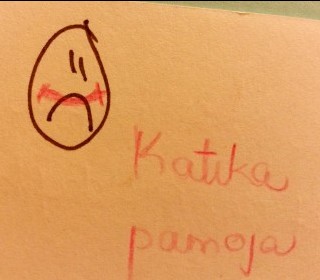
And after all, I was who and what I was: a morally biased non-Muslim single white woman researcher in a predominantly Muslim society, where it came to be these attributes that would often contest the legitimacy of my inquiry.
Having been raised in a “Western” country with a full prohibition of corporal punishment a certain moral bias did shape my personal point of view on the matter, which I nevertheless would only elaborate on if specifically asked about it. In some people’s views not being Muslim challenged my ability to understanding religious reasoning for corporal punishment, which it was often grounded in. And finally my status as a child-less unmarried foreign woman living on her own came to undermine my status as an adult-researcher and hence being taken seriously, particularly by women or mothers, who would tell me that I myself would remain “a child” until this situation eventually changed.
Yet, the biggest recurring emotional challenge remained witnessing children being hit. During observations in the schools and as part of everyday life this often came to be at the centre of my fieldnotes. Being a silent observer with the aim of not disturbing or interfering in children’s normal life situations while dealing with the complications of witnessing other’s pain often felt absurd. Still it seemed necessary to grasp a glimpse of the anyway simply through my presence distorted “normal” situations children experience in the Zanzibari education system.
Participant’s Views
When I meet the head teacher she proudly tells me the children have all brought back their cameras and are already waiting for me in a classroom. When I sit down with them and want to start collecting the cameras Maryam, one of the more outspoken and active ones in the group tells, me that they actually all forgot to bring them. The head teacher did not seem to have known this. When Maryam adds, “but please don’t tell our teacher, ok?” I understand that they must have lied about having brought the cameras in fear of being punished for it. (February 2015, Zanzibar)
My own emotional path during research is somewhat comparable to that of my research participants. Especially the child-centred methodological approach I worked with turned out to reveal much in this regard.
Situations like the one above became common and reflected the sensitivity of using supposedly child-friendly research methods. Working with children on a topic that concerned them in their own right and depicted them as “people” whose views could be taken seriously was a seldom viewpoint in Zanzibari society where children’s opinions are commonly sidelined in everyday life and rarely considered important.
Hence working with children through a child-centred research approach in a system of a general culture of punishment also meant working in a parallel system within which “mistakes” – such as forgetting to bring your camera – might again be punished with the rules applicable to the ruling system.
My methodological approach stressed the inseparability of children’s and adults’ lives and gave an idea of children’s negotiations while working with me as a researcher. While children were mostly excited about opportunities to draw or take photographs, teachers seemed hesitant and rather indifferent to such engagement, but nevertheless remained the main characters in charge of granting children’s participation in my project. To understand disciplining processes it became inevitable to understand child-adult relationships and the intersections of their worlds. Teju Cole’s (2007) Every Day is for the Thief offered thought on childhood that applied well to these observations. In Cole’s words “the completeness of a child is the most fragile and most powerful thing in the world. A child’s confidence is the world’s wonder” (p.31) – and in Zanzibar it often was indeed. Development organization’s approaches to empowering children to speak out about abuse and violence by focusing on child participation and making children’s voices heard often made people wonder, as it painted a role of the child in society that is far from common, and which is rather built on restrained and obedience than confidence and being outspoken. And it is at a later point in Cole’s story a doctor reflects on his treatment of child patients saying, “the kids are okay, actually, it’s the parents that are difficult. They’re the hardest part of pediatrics” (p.91) that I could again relate to my own situation.
Even though talking about a medical field, similarly in Zanzibar, I found in my research that parents and teachers – the adult counterparts in children’s lives – proved to be the most crucial, most difficult and at the same time most neglected group to work with. Like in pediatrics when treating a harm to children’s lives (be it an illness or violence inflicted in the name of discipline), children were usually the least difficult to work with whereas adults often had strong feelings about why child-rights based approaches were a “Western” approach, unsuitable for the Zanzibar context and corporal punishment a mechanism itself for protecting children from going off track.
Finally the last dialogue in Tayeb Salih’s (1962) The Doum Tree of Wad Hamid might serve as a preliminary conclusion to my fieldwork journey. While Salih’s characters wonder whether or not the old and beloved doum tree in the village will one day be cut down they agree that this will not be necessary because “what all these people have overlooked is that there’s plenty of room for all these things: plenty of room for the doum tree, the tomb, the water-pump, and the steamer’s stopping-place” (p.22).
Maybe child protection policy makers will realize that there is plenty of room, and even a need, for both international and non-international conceptualizations of childhood and protection, and that only approaches that respect and incorporate the variety of these concepts will be able to positively contribute to change in children’s lives.
References
Boyden, J. et.al. (2012) Child Protection and Harmful Traditional Practices: Female Early Marriage and Genital Modification in Ethiopia. In: Development in Practice, Vol 22 (4), London: Routledge, pp 510-522.
Cole, Teju (2007) Every Day is for the Thief. Cassava Republic: Abuja.
Davis, Christopher (2000) Death in Abeyance. Illness and Therapy among the Tabwa of Central Africa. Edinburgh University Press.
Rilke, Rainer Maria (1929) Letters to a Young Poet. A Book Virtual Digital Edition.
Salih, Tayeb (1962) The Doum Tree of Wad Hamid. Online edition: http://www.unz.org/Pub/Encounter-1962nov-00015
UNICEF (ed.) (2011) Violence against Children in Tanzania. Findings from a National Survey 2009. Dar es Salaam: UNICEF.
All pictures except Zanzibar city by Franziska Fay.
This post was first published on 6 July 2015.

